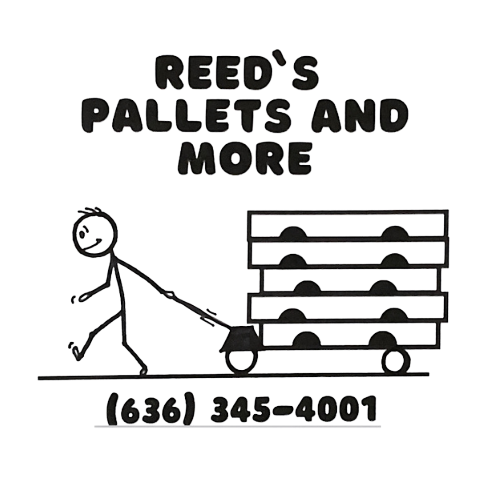Whats an "A" or "B" Pallet???

Your warehouse manager just called up front and said "Order me some skids, we're running low!" You call the local pallet guy and he's asks what size and grade do you need? Now What???
If you've ever been in this position, just understand, it's just as hard on our side. We want to get you the right pallets but need some info and you may or may not know the answer.
We're going to give you a little info to make you a little more knowledgeable in this area.
First off, we do not deal with brand new pallets at our business. We only sell used pallets that have been inspected and/or refurbished.
Anatomy of a Pallet
Runners - There are long boards, generally 2x4s (or close to that size) that have 2 notches cut onto one side of them. There are usually at least 3 runners per pallet but sometimes up to 5 runners. These are where the first size is measured. If the runner is 48 inches long the pallet is referred to as a 48x ?
Not all runners have notches in the side but they will still look like a 2x4. If the pallet runners have notches on the side, the pallet is referred to as a 4-way pallet, meaning it can be picked up from any side. If the pallet runner does not have notches on the side, this is referred to as a 2-way pallet, meaning it can only be picked up from the 2 ends.
Deck boards - these are the boards that are on the top or bottom of the pallet that go across the runners to make up the surface area of the pallet. There are both top deck boards and bottom deck boards. The deck boards are generally 5/8" thick and whatever the desired width. If these boards are 40" and matched with a 48" runner as above. then we will have what we call a standard pallet size, the most commonly used, a 48x40.
Pallet wood types - Many pallets are made from soft woods like spruce, pine, or fir (SPF) although some pallets need to be a little stronger so they are made of hardwood, usually oak. These are heavier and much stronger.
Size - Pallets are generally referred to as 48x40, 48x42, 48x45, etc. what does this mean? Basically you measure the length of the runner for the 1st number and the length of the deck boards for the 2nd number. There is a couple exceptions to this rule.
Block Pallets - These do not have runner boards, instead they have large wood blocks in the corners and the middle, generally 9 blocks, often referred to as 9 Block Pallets. These are built this way and allow very easy access to pick up the pallet from any side.
Wrong Way Pallets - These are pallets where the runners go the short distance of the pallet and the runners are longer and running the distance of the pallet. Generally pallets run the short distance, thus these are called wrong way pallets.
Zipper pallets - These are the pallets i dislike the most. hey just don't look professional at all although they can be very sturdy if they are built right. These pallets can be either a 2-way or 4 way pallet. The difference is in the deck boards. The deck boards don't go all the way across the pallet, normally 75% to 80% of the way. The pallet boards are staggered so the first one attaches to the left and middle. The next one will attach to the middle and the right side. This pattern alternates until the pattern completes...looking like a zipper.
Just a quick note about Letters or numbers...Some areas refer to pallets by letters and some areas refer to them as numbers. They are the same thing, an A is a #1 and a B is a #2, etc.
Pallet Grades
Pallets are sold based on their grade, and grade basically just means the condition of the pallet. Below are some basic definitions to give you a better idea what each type is.
Primes
Primes are standard 48x40 pallets with runners that have not been repaired. All deck boards, top and bottom are in new condition, none will be cracked or missing. In addition to this the end deck boards on both top and bottom will be 5 1/2" with the remaining deck boards being 3 1/2".
A's or #1s
These are standard 48x40 pallets. All deck boards and runners are in like new condition with no visible repairs. The pallets can be repaired but any repairs must return the pallet to new condition.
B's or #2s
These are standard 48x40 pallets that are sturdy and in good working condition. These pallets will have been repaired. They can have a broken or cracked board and can, in some instances be missing a deck board as long as it is not an end board on the upper side. I prefer all end boards are intact as I don't like a pallet that can rock when materials are loaded on them. These pallets may also have a broken or cracked runner as long as it has been repaired. Cracks are often repaired with staples, or a partial or full additional runner inserted alongside the faulty runner.
C's or #3s
These are what are commonly referred to as core pallets. These pallets are usually no longer usable except to break down as parts for repairing other pallets. The ones that are usable will not look very good, often having 3 or 4 (or more) runner repairs and an assortment of deck boards. We do not sell these in our business, these are only broken down and used for parts.
Your second block of text...